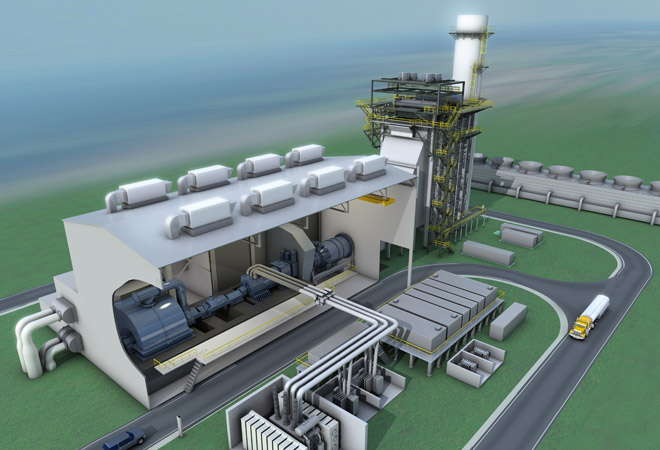

Combined power cycles are used in modern power generation because they combine two different power cycles that complement each other, improving overall plant efficiency. The most common setup for a combined cycle plant tops a Rankine cycle with a Brayton cycle. These systems are also known as Combined Gas-Vapor power cycles. First we need to understand each of the operating cycles.
The Rankine cycle is a steam power generation. Water is pumped (and compressed slightly, ideally isentropic) to a state just off from the liquid side of the vapor curve. It is then heated at a constant pressure inside of a boiler to a final temperature. From this point (in an ideal, isentropic) turbine, the steam would be allowed to expand in the turbine isentropically. This step is what generates power in the Rankine cycle. Then heat needs to be rejected to a low temperature source via a condenser, bringing the steam to a liquid back the first state in the cycle.
The Brayton cycle is a gas power generation. Air is compressed using a pump (ideally isentropic) to some pressure based off from the pressure ratio of the system. Then from this state, at a constant pressure, fuel is burned, raising the temperature to a high temperature of the cycle. This hot gas is allowed to expand and cool inside of the turbine generating power (ideally, also isentropic). Then the air needs to be exhausted to complete the cycle.
In a combined cycle, when the air would normally be exhausted on the Brayton cycle, a heat exchanger is added replacing the boiler of the Rankine cycle. This allows the hot exhaust gases of the Brayton cycle to heat the water of the Rankine cycle to steam.
img src: https://powergen.gepower.com/plan-build/tools-resources/power-generation-basics/combined-cycle-power-plants.html

img src: http://www.eon.com/en/business-areas/power-generation/natural-gas-and-oil/combined-cycle-gas-turbine-how-it-works.html